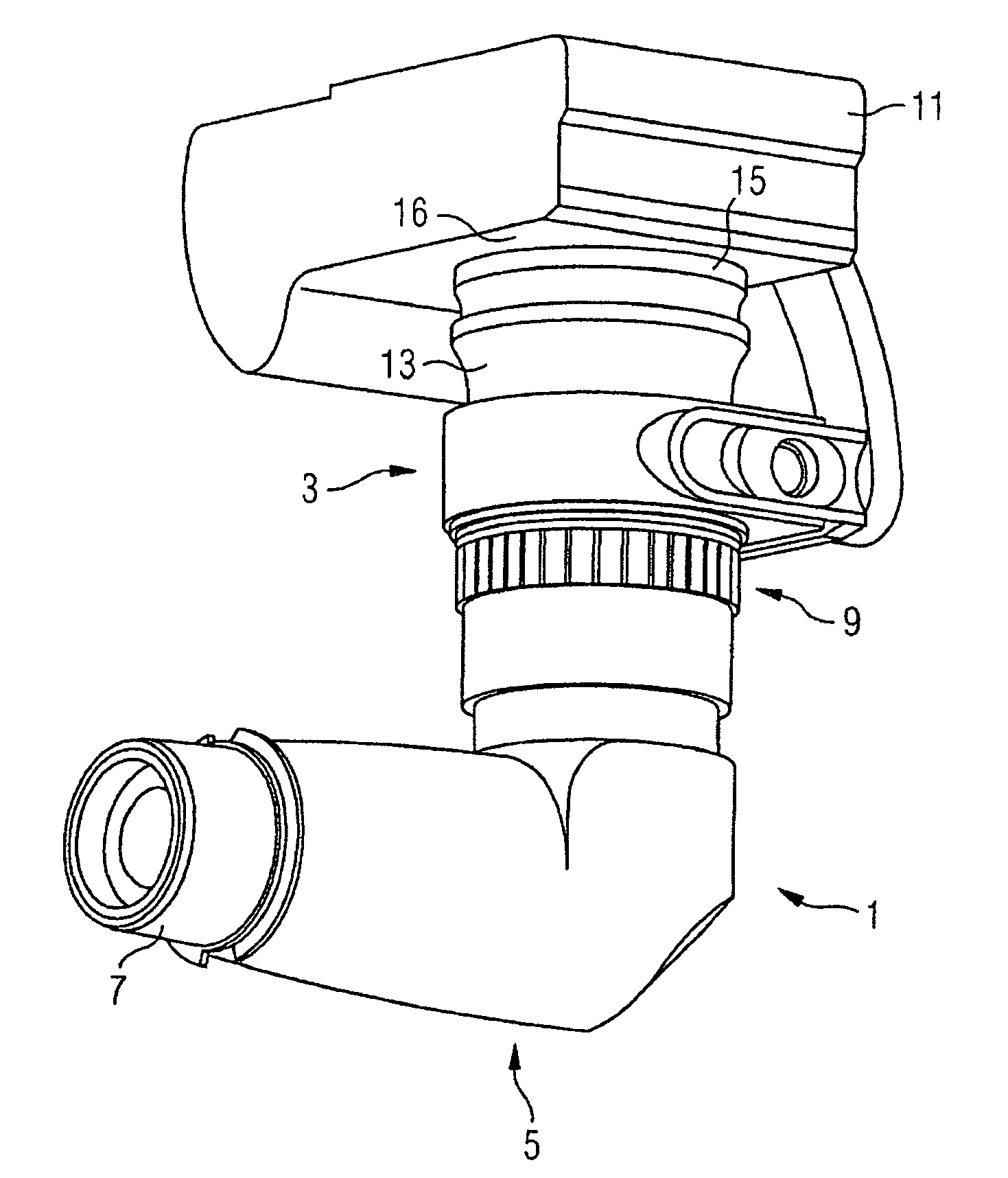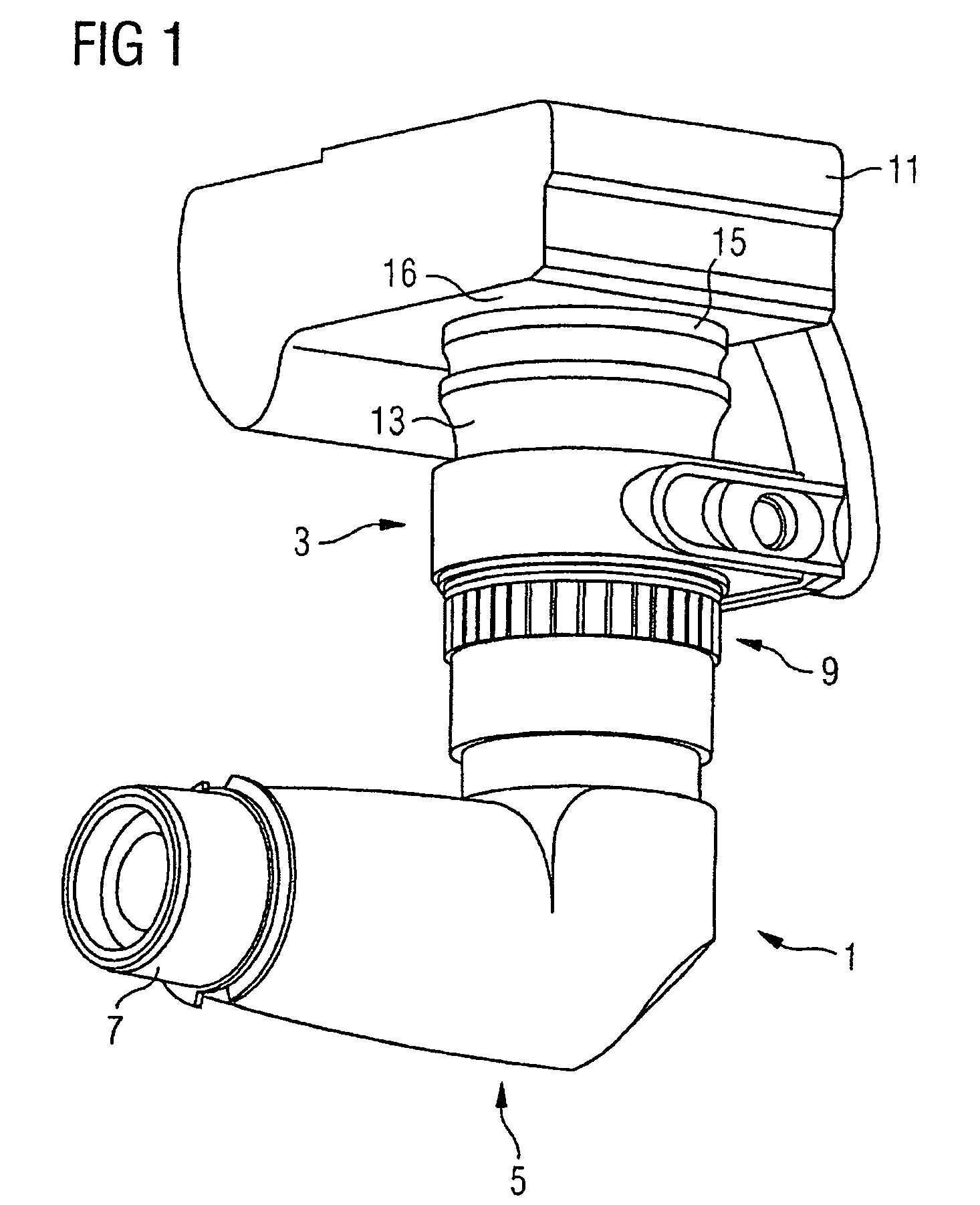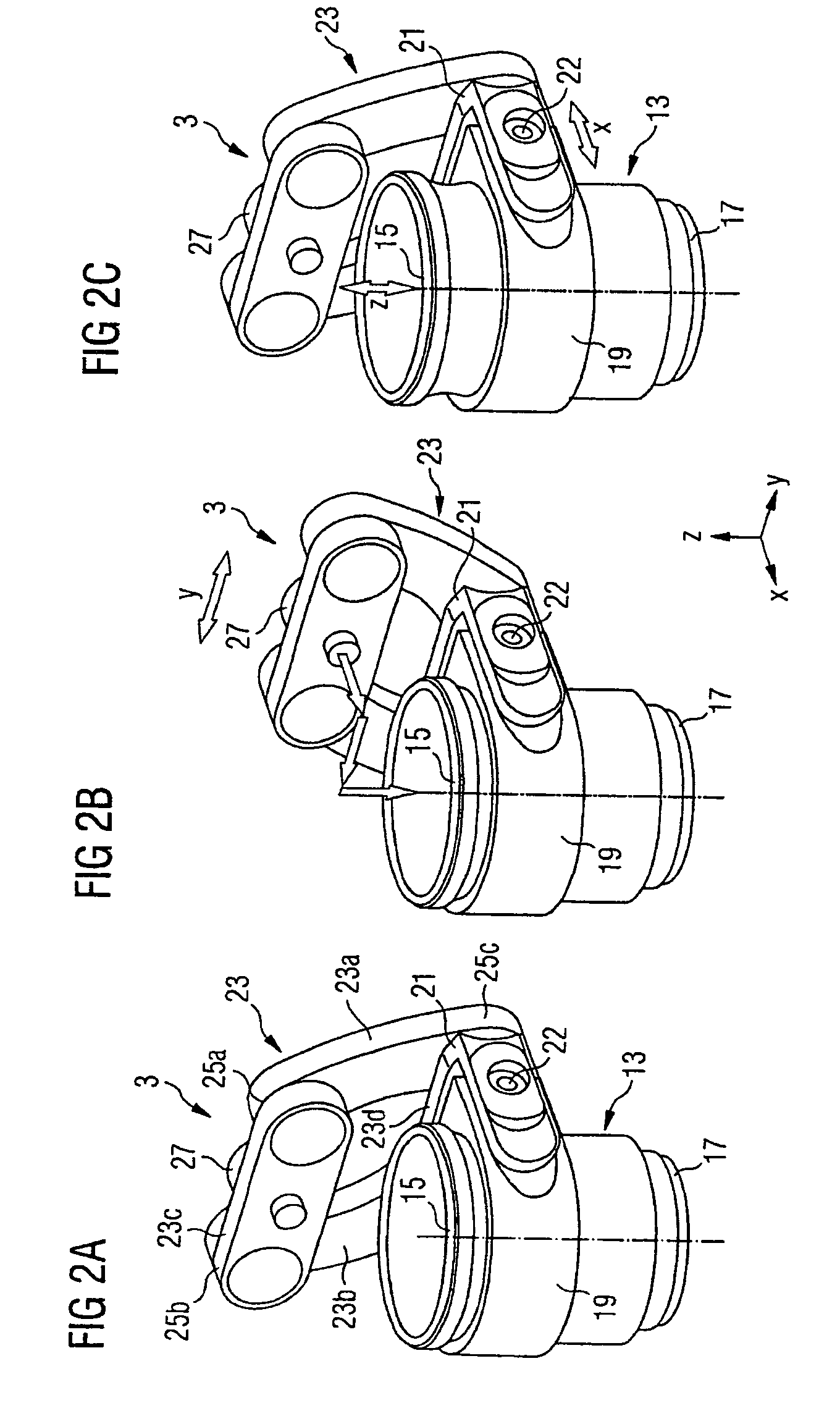Camera adapter having a camera holder and an optical adapter
a technology of optical adapters and camera holders, which is applied in the field of camera adapters, can solve the problems of not being able to use a coupling device in the binocular tube of the observer, not being able to arrange the coupling device in the binocular tube, and being less suitable for use with the digital photographic apparatus
- Summary
- Abstract
- Description
- Claims
- Application Information
AI Technical Summary
Benefits of technology
Problems solved by technology
Method used
Image
Examples
first embodiment
[0037]FIGS. 2A to 2C illustrate the camera holder of the camera adapter 1 in detail, and shows the sleeve 13, the edge 15 and an external thread 17 at the end opposite the edge 15. The external thread 17 defines the mating piece for the union nut of the optical adapter and thus forms the mechanical interface to the optical adapter. A plug-in sleeve or a connector may be provided instead of the external thread.
[0038]The sleeve 13 is surrounded by a clamping ring 19 that is connected to a slide 21. A parallelogram linkage 23 is arranged at that end of the slide 21 that faces away from the clamping ring 19. The linkage 23 includes four lever arms 23a to 23d that are each connected to one another at their ends by rotating joints 25a to 25d. In this case, the lever arm 23d is a crossmember of the slide 21. A screw 27 having a thread that matches the stand thread of a camera is arranged in the center of the lever arm 23c.
[0039]The illustrated construction illustrated in FIGS. 2A-2C makes...
second embodiment
[0042]A camera holder in accordance with the invention is identified by the numeral 103 in FIGS. 3A to 3C. The camera holder 103 comprises a sleeve 113 and a slide 121 fastened to the sleeve 113. The slide 121 has a receptacle 123 for receiving a bracket 125 that is in the form of a segment of a circle. A screw 127 that matches a stand thread of a camera is situated at the outer end of the bracket 125. The bracket 125 has an elongated hole 129 with a curvature that follows the curvature of the bracket 125.
[0043]A threaded pin (not shown) is passed through the elongated hole 129 of the bracket 125 and through the receptacle 122 of the slide 121. The threaded pin and the contour of the elongated hole 129 define a guide system for guiding the bracket 125 through displacement inside the receptacle 123 of the slide 121. The pin axis also constitutes an axis of rotation about which the bracket 125 can be rotated. The bracket 125 can be fixed with respect to the threaded pin using a tensio...
third embodiment
[0046]the camera holder is described below with reference to FIGS. 4A to 4C. This embodiment is very similar to the embodiment of FIGS. 3A to 3C. Elements in both embodiments are denoted by the same reference numerals in FIGS. 3A to 3C and 4A to 4C.
[0047]The camera holder 203 of the third embodiment comprises a sleeve 113 with an attachment 215 that has a receptacle 217. A pin 219 is pivotably mounted in the receptacle 217. The pivot axis of the pin 219 is parallel to the central axis of the sleeve 113. The pin 219 extends through an elongated hole 129 of a curved bracket 125. As in the second exemplary embodiment, the elongated hole 129 has a curvature that follows the curvature of the bracket 125. In this case too, a straight bracket with a straight elongated hole can be used instead of a curved bracket with a curved elongated hole.
[0048]As in the second embodiment, the screw 127 and a camera fastened to the screw 127 can be moved in the region of an annular surface in the third e...
PUM
 Login to View More
Login to View More Abstract
Description
Claims
Application Information
 Login to View More
Login to View More - R&D
- Intellectual Property
- Life Sciences
- Materials
- Tech Scout
- Unparalleled Data Quality
- Higher Quality Content
- 60% Fewer Hallucinations
Browse by: Latest US Patents, China's latest patents, Technical Efficacy Thesaurus, Application Domain, Technology Topic, Popular Technical Reports.
© 2025 PatSnap. All rights reserved.Legal|Privacy policy|Modern Slavery Act Transparency Statement|Sitemap|About US| Contact US: help@patsnap.com



